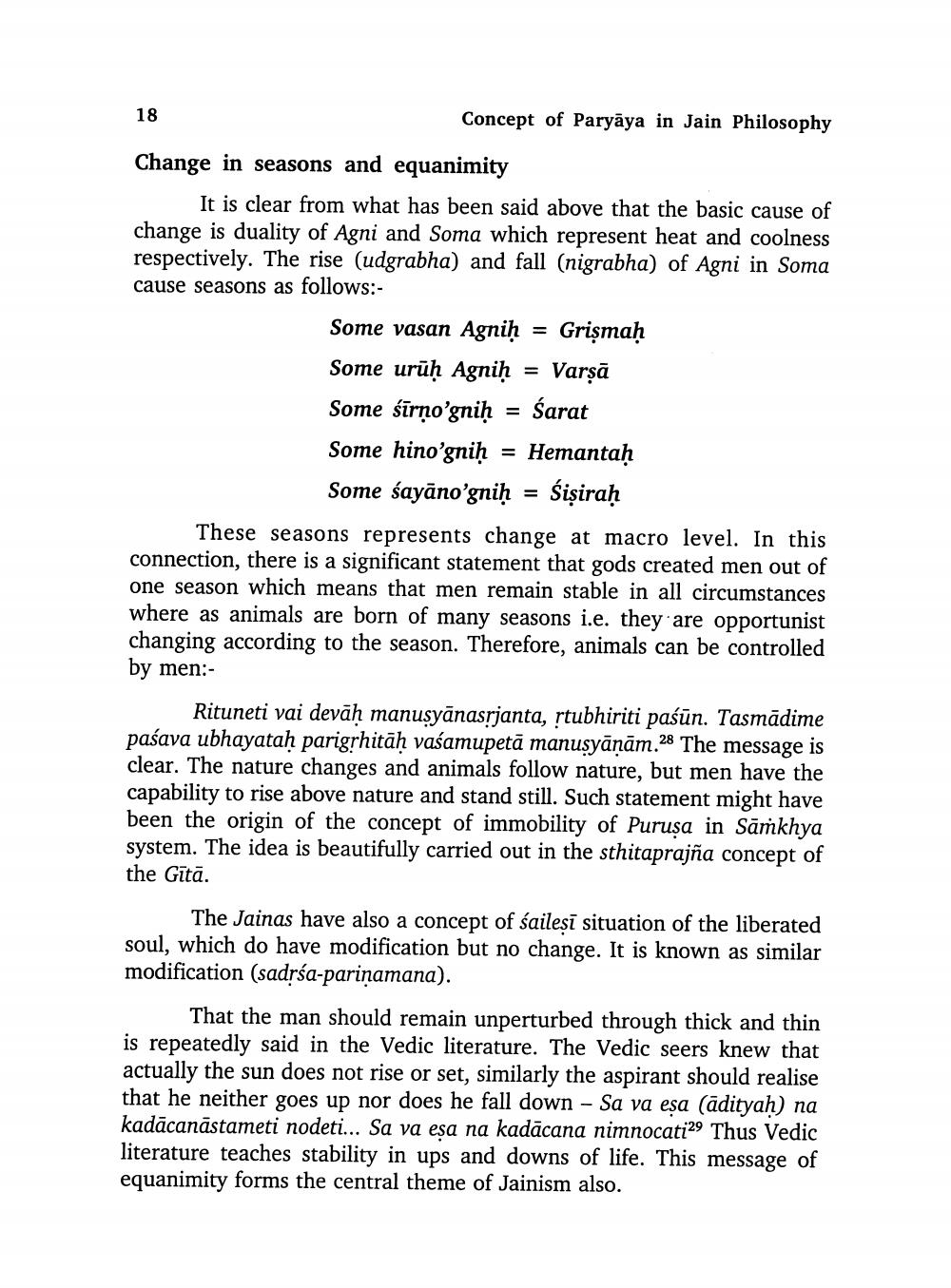________________ 18 Concept of Paryaya in Jain Philosophy Change in seasons and equanimity It is clear from what has been said above that the basic cause of change is duality of Agni and Soma which represent heat and coolness respectively. The rise (udgrabha) and fall (nigrabha) of Agni in Soma cause seasons as follows: Some vasan Agnih = Grismah Some uruh Agnih = Varsa Some sirno'gnih = Sarat Some hino'gnih = Hemantah Some sayano'gnih = Sisirah These seasons represents change at macro level. In this connection, there is a significant statement that gods created men out of one season which means that men remain stable in all circumstances where as animals are born of many seasons i.e. they are opportunist changing according to the season. Therefore, animals can be controlled by men: Rituneti vai devah manusyanasrjanta, rtubhiriti pasun. Tasmadime pasava ubhayatah parigrhitah vasamupeta manusyanam.28 The message is clear. The nature changes and animals follow nature, but men have the capability to rise above nature and stand still. Such statement might have been the origin of the concept of immobility of Purusa in Samkhya system. The idea is beautifully carried out in the sthitaprajna concept of the Gita. The Jainas have also a concept of sailesi situation of the liberated soul, which do have modification but no change. It is known as similar modification (sadrsa-parinamana). That the man should remain unperturbed through thick and thin is repeatedly said in the Vedic literature. The Vedic seers knew that actually the sun does not rise or set, similarly the aspirant should realise that he neither goes up nor does he fall down - Sa va esa (adityah) na kadacanastameti nodeti... Sa va esa na kadacana nimnocati29 Thus Vedic literature teaches stability in ups and downs of life. This message of equanimity forms the central theme of Jainism also.




